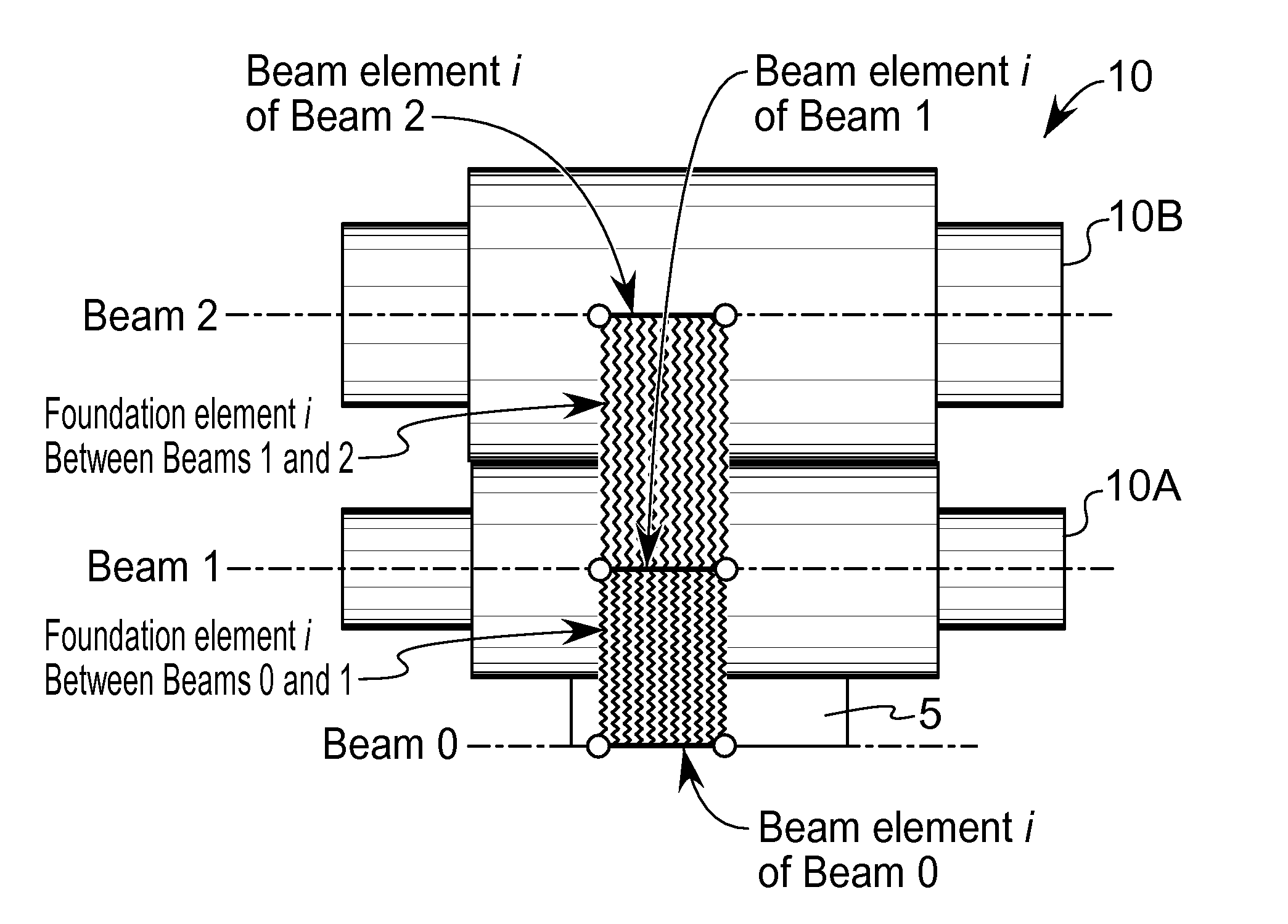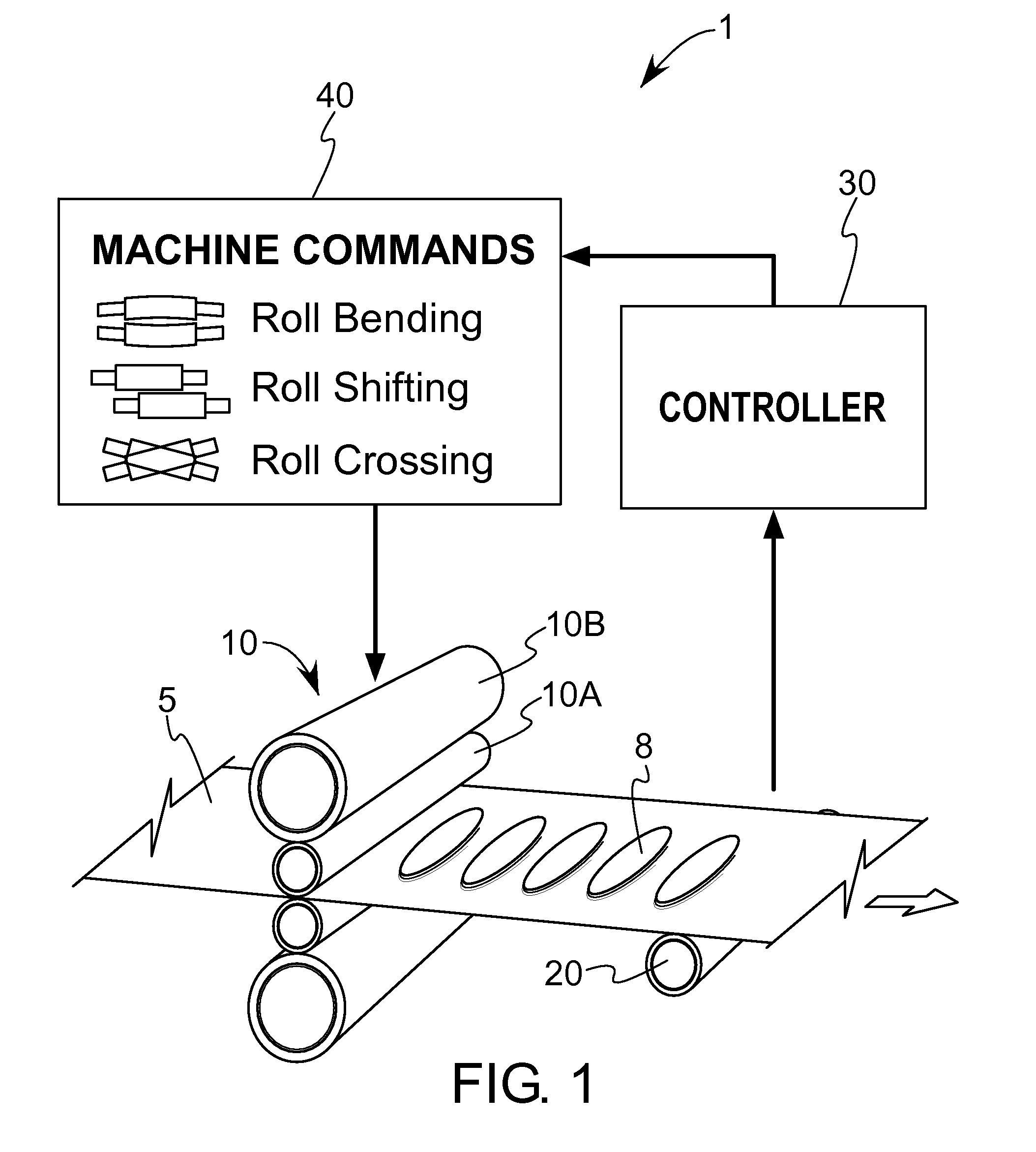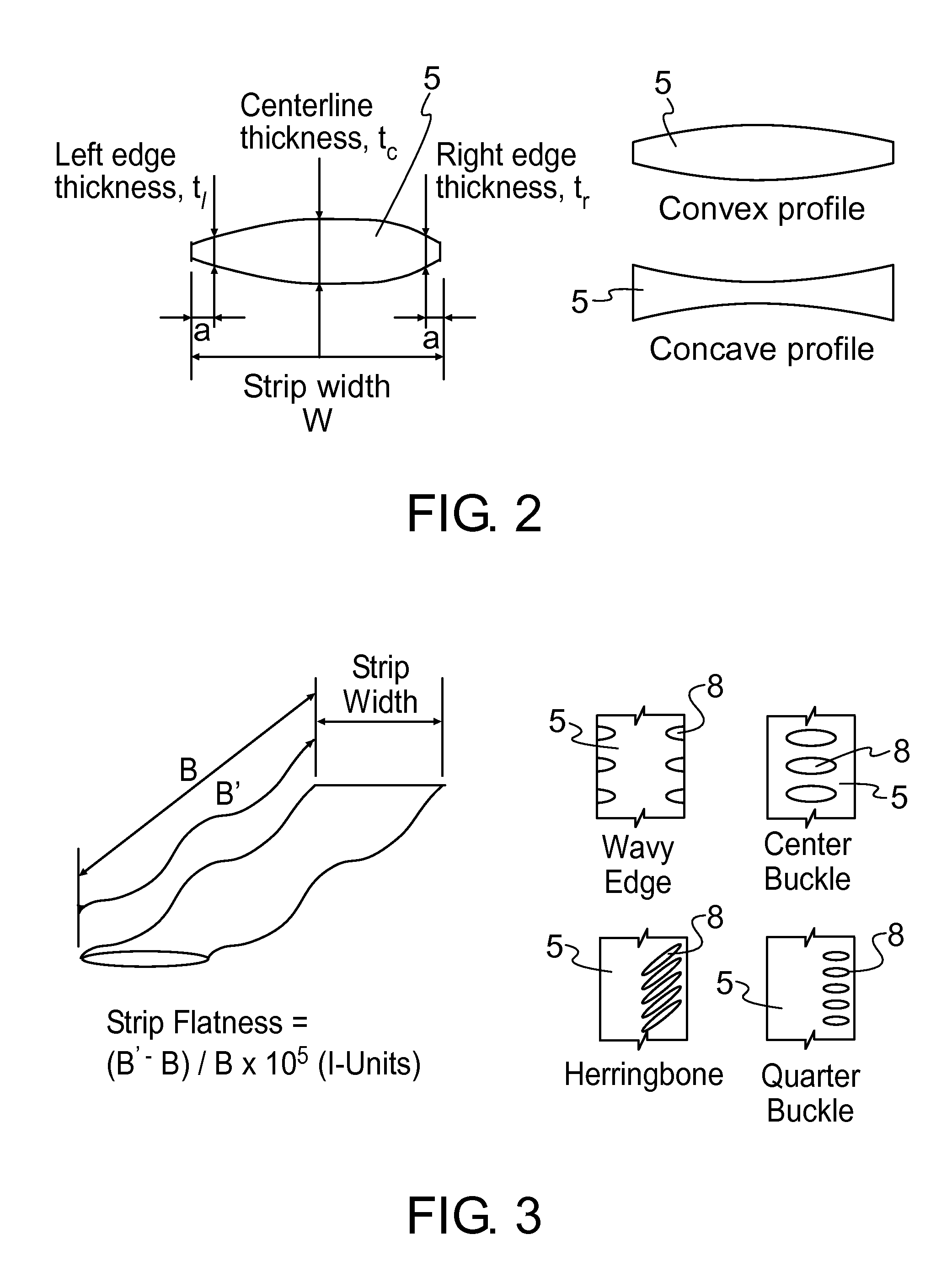Analytical method for use in optimizing dimensional quality in hot and cold rolling mills
a technology of hot and cold rolling mills and analytical methods, applied in the direction of measuring devices, profile control devices, manufacturing tools, etc., can solve the problems of inability to adapt to cluster-type and related modern rolling stand configurations, inability to predict and/or control and inability to accurately predict the profile and flatness of rolled metal. , to achieve the effect of reducing the number of calculations the arithmetic logic uni
- Summary
- Abstract
- Description
- Claims
- Application Information
AI Technical Summary
Benefits of technology
Problems solved by technology
Method used
Image
Examples
Embodiment Construction
[0030]Referring first to FIG. 1, a simplified view of a system 1 to predict and control profile and flatness of strip 5 is shown. The system 1 includes a rolling mill made up of numerous rolls (also referred to as rollers) 10 configured to process strip 5 along rolling direction D which may alternate during successive reductions in thickness of strip 5. Other details of the rolling mill (including strip-conveying members in the form of feed and take-up reels, roll actuators, motors, drivers and related componentry for roll bending, crossing or shifting) are eliminated from the drawing to promote clarity. Rollers 10 may further be classified as work and backup rollers 10A and 10B, where the former contacts strip 5 and the latter contacts the former to provide backup. Flatness defects (or undulations) 8 that may be sensed and eventually corrected by system 1 are shown on strip 5 downstream of the rollers 10. The system 1 also includes one or more sensors 20 that may be located on eith...
PUM
| Property | Measurement | Unit |
|---|---|---|
| Stiffness | aaaaa | aaaaa |
| Material properties | aaaaa | aaaaa |
| Displacement | aaaaa | aaaaa |
Abstract
Description
Claims
Application Information
 Login to View More
Login to View More - R&D
- Intellectual Property
- Life Sciences
- Materials
- Tech Scout
- Unparalleled Data Quality
- Higher Quality Content
- 60% Fewer Hallucinations
Browse by: Latest US Patents, China's latest patents, Technical Efficacy Thesaurus, Application Domain, Technology Topic, Popular Technical Reports.
© 2025 PatSnap. All rights reserved.Legal|Privacy policy|Modern Slavery Act Transparency Statement|Sitemap|About US| Contact US: help@patsnap.com



